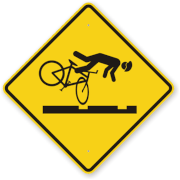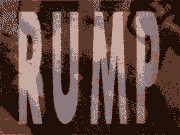|
Chard posted:You doing those in one go? I quick-glanced a map and it seems all those 13k+ peaks are on the north-west border unless I'm misreading. I think it's possible to do them all in one go, but I'm planning on doing them pretty much one or two per weekend. Unless I can find someone to split carrying gear with I'm not keen on packing in a bunch of stuff and camping out at 10000+ feet night after night. Since winter may never strike Utah again I decided to get out and climb Pilot Peak just across the border in Nevada. Nice day for it  The hike up was less than thrilling  One of two mountains to make my quads sore. Got good views of the salt flats though 
|
|
|
|

|
| # ? Apr 25, 2024 15:24 |
|
Hotel Kpro posted:Since winter may never strike Utah again I decided to get out and climb Pilot Peak just across the border in Nevada. Nice day for it Nevada's beauty is underrated.
|
|
|
|
Tacier posted:Nevada's beauty is underrated. I live here. If you like empty wasteland and jagged mountains with nothing living on them, good for you. I drive to where there痴 trees and water though.
|
|
|
|
thesurlyspringKAA posted:I live here. If you like empty wasteland and jagged mountains with nothing living on them, good for you. I drive to where there痴 trees and water though. JK, we all know the best parts of Tahoe are in California.
|
|
|
|
Brooks Range is running 89% off sleeping bags, tarps/tents, clothing etc. 850 down fill sleeping bags for $30-80!
|
|
|
|
Snagged myself an Ultralite Quick-Tent for $30 with tax and shipping.
|
|
|
|
Managed to get a sleeping bag and jacket, I think. No confirmation email yet. That website is getting destroyed.
|
|
|
|
I got a confirmation email 5 minutes after ordering.
|
|
|
|
This is a very confusing combination of messages to be presented in the same dialog box. quote:Gateway Response: Your order has been received. Thank you for your business!
|
|
|
|
Bottom Liner posted:This is a very confusing combination of messages to be presented in the same dialog box. I would try Paypal. I didn't get a pending charge until Paypal went through. Also got my confirmation email. Christmas gifts for one person taken care of. cheese eats mouse fucked around with this message at 01:23 on Nov 27, 2018 |
|
|
|
Lol they got slammed. Gonna take up to a week for them to process my order and ship the tarp.
|
|
|
|
Verman posted:Brooks Range is running 89% off sleeping bags, tarps/tents, clothing etc. 850 down fill sleeping bags for $30-80! Somehow managed to accidentally unsub this thread and missed the sale  . Could have used a jacket and sleeping bag, but those are definitely prices to ball out over. . Could have used a jacket and sleeping bag, but those are definitely prices to ball out over.
|
|
|
|
Has anyone here successfully gotten back into backpacking after suffering a spinal disc hemorrhage? I just had one and now I知 terrified that I値l have to abandon my favorite hobby...
|
|
|
|
thesurlyspringKAA posted:Has anyone here successfully gotten back into backpacking after suffering a spinal disc hemorrhage? I just had one and now I知 terrified that I値l have to abandon my favorite hobby... Time heals all wounds Start digging into r/ultralight and getting your pack weight down as much as possible to help
|
|
|
|
Watch Meru the dude has a nearly fatal skiing accident before the trip, shattered vertebrae, a cranial fracture, then goes and climbs one of the most difficult mountains on earth, first ascent, while showing stroke-like symptoms for a good portion of the climb
|
|
|
|
A local grocery store is going out of business and it makes me want to stock up on all the hiker esque food like crazy. $.20 rice sides get in
|
|
|
|
thesurlyspringKAA posted:Has anyone here successfully gotten back into backpacking after suffering a spinal disc hemorrhage? I just had one and now I知 terrified that I値l have to abandon my favorite hobby... I've injured my back twice playing hockey, both lower back (positive it was a herniated disc both times). First time was around 5 years ago. Couldn't walk for a few days, super sore with shooting pain and spasms for weeks after and lingering effects until about a year after. Hurt it again in august and developed sciatica with shooting pain from lower back, through my right butt cheek and down my right leg. Its gotten slightly better since august but still hurts on a daily basis and makes me feel 100 years old. Seriously, getting old sucks and injuries take forever to heal. I've backpacked this year and it seemed fine. Ibuprofen and muscle strengthening exercises are key. I constantly work on trying to improve my glutes, back and hamstrings. I work in an office at a computer all day so being active on the weekends doesn't keep me strong anymore, its just a ticking time bomb for more injuries the older I get. Just go slow. Start by hiking with a day pack and see how it goes. While the hike itself might seem manageable, see how you feel the next morning. Sore? Can't bend over? Can't move without pain? Then doing a fully loaded multi day backpacking trip might be too much for now. If you go slow, start with a lightweight overnight and see how you feel. Just see how it goes. Don't abandon a favorite past time prematurely just because you need time to heal and get back into it.
|
|
|
|
So I just got a new pair of heavy boots after surviving on hiking shoes after my last pair de-laminated a couple of years ago. My shoe size is a 12.5, which is almost non-existent from most manufacturers. Therefore, I got the boots in a 13: https://www.zamberlanusa.com/product/9789427/996-vioz-gtx-r-leather-backcountry-boots-dark-grey They feel a little bigger than I would have liked, but have ample room in the toebox. I have about a thumbs length when I push my foot all the way in while unlaced. I don't move much when walking. I could move down to a 12, but it will be tighter. Is it best to start at a smaller size and have it expand or get the bigger boots which fit okay to begin with? They are leather boots without much padding.
|
|
|
|
Cheesemaster200 posted:So I just got a new pair of heavy boots after surviving on hiking shoes after my last pair de-laminated a couple of years ago. I literally have the same issue. My podiatrist said to always go with size 13 if there is any doubt, as long as your foot doesn't slide when you strike the ground. You should err on giving your toes the ability to spread within the toe box rather than having them locked in place with a smaller size boot. Previously I had always sized down, so it felt odd at first to have the excess room between my toes and the end of the shoe. But I have had less pain since going with a 13 or 12W rather than 12. A thumb width space between the end of your toes and the front of the shoe should be fine, assuming that you can get a secure fit with the laces, etc.
|
|
|
|
Cheesemaster200 posted:So I just got a new pair of heavy boots after surviving on hiking shoes after my last pair de-laminated a couple of years ago. Thumb's length is not too much. The larger size will be more comfortable, probably. For walking boots there is generally little reason to downsize unless they are noticeably too big. The whole thing about "don't want your toes to slide forward in too big a shoe" is mostly BS as foot security against sliding is mostly determined by the fit around your instep and a foot that slides in a large boot would mash toes just as bad or worse in a small boot. A larger boot means less precise toe placement and slightly less rigidity, which can matter if e.g. scrambling or pairing with crampons, but if the purpose of the boot is mostly walking/hiking (especially long distances with a heavier pack) then it's definitely better to err on being too large vs. too small. A slightly too small boot can cause you a lot more problems than a slightly too big one.
|
|
|
|
Cheesemaster200 posted:So I just got a new pair of heavy boots after surviving on hiking shoes after my last pair de-laminated a couple of years ago. Lowas come in US 12.5 and are great boots. I guess if your foot isn't moving those may be OK but they do sound a bit big.
|
|
|
|
trem_two posted:I literally have the same issue. My podiatrist said to always go with size 13 if there is any doubt, as long as your foot doesn't slide when you strike the ground. You should err on giving your toes the ability to spread within the toe box rather than having them locked in place with a smaller size boot. The width of the boot is fine to be honest, it is just the length that is a little loose. I also figure I can wear liners with the sock and would probably be fine. Much easier to have more sock rather than less. I also want to note that this is while trying on the boot at home in my living room when it is 30 degrees outside. Once I start moving and my feet swell I am assuming the bigger would be better.
|
|
|
|
Cheesemaster200 posted:The width of the boot is fine to be honest, it is just the length that is a little loose. I also figure I can wear liners with the sock and would probably be fine. Much easier to have more sock rather than less. I also want to note that this is while trying on the boot at home in my living room when it is 30 degrees outside. Once I start moving and my feet swell I am assuming the bigger would be better. You can always try to find different foot beds as well which can eat up space in different parts of the boot.
|
|
|
|
Different lacing techniques can make a big difference too. If your foot is sliding forward I'd try a heel lock lace and see how that works.
|
|
|
|
My Brooks Range order finally shipped. Lol.
|
|
|
|
Does anybody know of a good site for finding out park temperatures internationally? I知 looking at Torres Del Paine in Chile and iOS Weather app, Google Search widget, and Weather.com are all giving me different temperatures, with a difference of 19F. I知 trying to plan for my hike in two weeks and I値l be packing clothing for all weather and temps anyway, but it would be good to know if my 32F sleeping bag is good enough or if I値l need something warmer.
|
|
|
|
Your best bet is to contact mountain guides operating in the region and ask them what site gives the most reliable information.
|
|
|
|
Blinkman987 posted:Does anybody know of a good site for finding out park temperatures internationally? When are you going? I am doing the W Trek (west to east) December 18-22.
|
|
|
|
Oakland Martini posted:When are you going? I am doing the W Trek (west to east) December 18-22. Oh jeez. I知 just missing you. I知 Dec 25 - 30. Morbus posted:Your best bet is to contact mountain guides operating in the region and ask them what site gives the most reliable information. I talked to some people who went and they all said it just depends from campsite to campsite and all those temps could be true at any given time across the park. Blinkman987 fucked around with this message at 06:27 on Dec 7, 2018 |
|
|
|
Blinkman987 posted:I talked to some people who went and they all said it just depends from campsite to campsite and all those temps could be true at any given time across the park.
|
|
|
|
Oakland Martini posted:When are you going? I am doing the W Trek (west to east) December 18-22. You should leave a card or some random artifact for Blinkman to find
|
|
|
|
Blinkman987 posted:Oh jeez. I知 just missing you. I知 Dec 25 - 30. You should be able to get local temperature data, for today, to better than a 19F range. Usually when you see numbers all over the place like that, it's because you're checking weather for a mountainous area, and depending on how a particular site integrates and interpolates weather sensor data you may get very different (and wrong) results. The best sites (like NOAAs pinpoint tool) will have some scheme for adjusting weather station and other data based on a terrain and elevation model. For outside the U.S., mountain-forecast.com does an OK job of this and has generally been better for me than many other tools (e.g. google, iOS widget, yr.no). That being said, usually when I go someplace outside the US, there is some local tool that most of the mountain guides or experienced locals use that tends to be best. So I'd still recommend checking with some guide services over there, as they will have a better idea than anyone else. Baring that, if you are just interested in temperature, taking the temperature from a nearby reliable weather station or town, and correcting to the elevation of your campsite by subtracting ~1 degree C per 100 meters, should give you a reasonably good lower bound unless there is a storm.
|
|
|
|
Does anyone know a thing or two about picking snowshoes? I've been snowshoeing once and borrowed a clumsy pair for backpacking. I think I want the type that are good for rolling terrain, but I don't know what's really decent aside from that. I weigh like 215 lbs, so some of the shoes would require the optional fins -- or should I just get a bigger pair that will keep me floating on the snow without fins? And what's the effective difference between the unibody aluminum ones or the kind that look like giant tennis rackets? Thanks for any advice, I'm really clueless about this subject.
|
|
|
|
I always suggest getting a pair of basic snowshoes during a sale because they will be good enough for most uses and you won't feel so bad if you don't use them much. You don't need a $250 set to get started; if you're very interested, something in the $50-75 range should be fine. Traditional snowshoes that are four feet long --- think bent logs tied in a teardrop with a tennis racket webbing --- are mostly for entirely flat terrain carrying heavy loads across deep, compacted snow. Plastic snowshoes are for children and dogs. I suspect they rarely last more than one season, but hey $20 is inexpensive fun. Aluminum tube with a solid fabric center is the entry point for regular snowshoes. "Fabric" typically means nylon plastic blends, but those provide better flotation than tennis rackets. Most will have a bar on which your heel sits to provide some grip going down hills, and a metal plate onto which the front of your foot is placed. There are crampons/spikes/teeth underneath to give you 'bite' when you push off with your toes. Multiple binding methods exist, and this is where it gets tricky and picky. Atlas had a webbing/strap system that I found easy to use because you could just pull to cinch the bindings, and a levered release let you loosen the straps to get them off. After many miles, the straps (nylon webbing) would get hard or frozen so extraction would be more difficult. Those had a fixed heel cup. Others have rubber straps with eyelets. They're faster, more likely to come undone, easy to over-tighten, and you usually have to strap your heel separately. There are other systems but you really need to go with your boots and make sure they tighten over the right part of your foot. (If it hurts in the store, imagine give miles later.) For instance, I don't like the front strap directly above my toes joints because it hurts while walking. Get snowshoes that are rated for your total weight, which includes your boots and pack and big puffy jacket and so forth. Don't mess with detachable tails unless you have a reason, don't bother with heel lifts unless you have a reason, and don't spend money on extra side rails and more aggressive crampons and bindings unless you have a reason. You can use snowshoes rated slightly below your weight, but again it's better if you have a reason to do that. Edit: Online search turned up some starter models. Wildhorn Outfitters 27" 235lb $70, Enkeeo 30" 210lb $80, GSM Odyssey 30" 250lb $50 (maaaybe read reviews first?), G2 30" 250lb $80. (I've never used any of these, and don't necessarily recommended them, just wanted to check prices.) PhantomOfTheCopier fucked around with this message at 01:53 on Dec 23, 2018 |
|
|
|
Thanks, that's very helpful! I will probably be buying a pair from REI Outlet because I have some store credit.
|
|
|
|
Vivian Darkbloom posted:Thanks, that's very helpful! I will probably be buying a pair from REI Outlet because I have some store credit. Ascender bars will save your calves if you're snowshoeing uphill much. If you don't anticipate anything remotely steep you can usually find better deals on ones without them though. Generally speaking you can't go wrong with anything from MSR.
|
|
|
|
How do I use bivy? After all these years of camping in different ways, I finally got the Enlightened Equipment Recon bivy for Christmas and tried it out. It was a bit of a failure and I hope it was because I wasn't using it right because I love the idea of a bivy for situations where I cannot hang my hammock. I was hoping that since so much of it was bug netting, it would breathe better and I could avoid the problems people complain about with condensation in the bivy. Nonetheless, when the morning came around, there was a good amount of moisture inside the bivy and the outside of my quilt was wet. Thankfully the moisture didn't permeate to where I could feel it inside, but the idea of having to air-dry my quilt and my bivy every morning on the trail is a major turn-off. This has almost never been the case from my tent and hammock camping experience. I know that a single night is an exceedingly poor sample size and I am certainly not giving up on bivy camping, but I am interested in some tips to minimize condensation and optimize my experience. Should I stretch out my camp towel along the top of my quilt near my feet? Would that even make a difference? I'm looking at a 10-day 100-mile hike along the Guadalupe Ridge Trail in west Texas and New Mexico this spring and I know I will need to rely nearly 100% on a tent or bivy since hanging a hammock in the desert is often not an option. I do hope that dry desert camping yields drier morning results. Any tips for enhancing my bivy camping experience are welcome, please 
|
|
|
|
That痴 just the way bivys are. The pros don稚 outweigh the cons especially when compared to other ultralight options.
|
|
|
|
Hungryjack posted:How do I use bivy? I am by no means a bivy expert but have spent some time in them. First things first make sure you air out your feet a bit if you can before you go in for the night. My experience has been if I'm out huffing and puffing cleaning up camp and go straight in things get clamy. Could've also been the weather if you were out on a humid night. I would think that that on your desert trip you'd have much less of a problem. Only other thought I'd have is to make sure you suspend the top of the bivys head net area to your tarp or a line above if you can. Increases the airflow and seems to help as well.
|
|
|
|

|
| # ? Apr 25, 2024 15:24 |
|
I've used a (borrowed) bivy a handful of times, but it's a lot better in dry conditions. I've done a couple nights on snow in the open with a bivy and wiggy's bag with zero condensation.
|
|
|









































